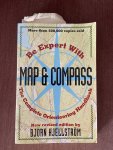I’m hoping to do an OTC backpack solo hunt this year and was looking for some advice from you seasoned guys.
Ive been pretty fortunate to hunt western areas that are pretty open with success using my GPS and phone, but wanted some experience with map and compass for heavily wooded back country this season.
Could you knowledgeable navigators throw out some suggestions on decent compasses, which maps work best/easiest for a newbie and any suggestions on classes or ways to learn quickly without breaking the bank?
Thank you In advance!
Ive been pretty fortunate to hunt western areas that are pretty open with success using my GPS and phone, but wanted some experience with map and compass for heavily wooded back country this season.
Could you knowledgeable navigators throw out some suggestions on decent compasses, which maps work best/easiest for a newbie and any suggestions on classes or ways to learn quickly without breaking the bank?
Thank you In advance!

